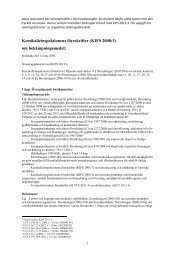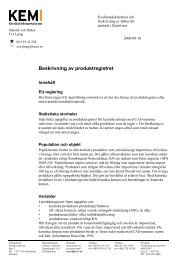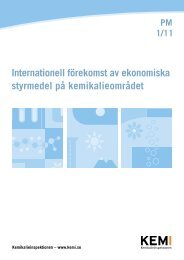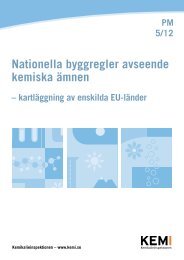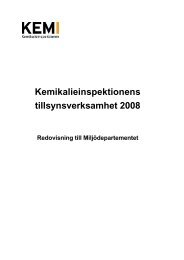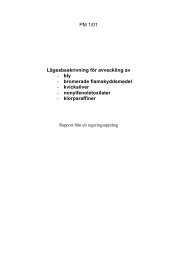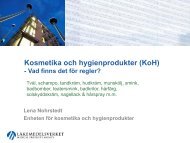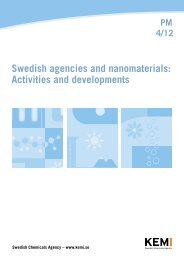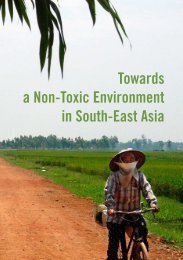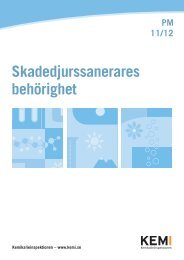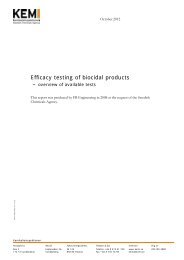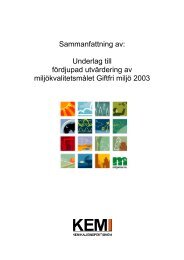KemI Rapport 3/06. - Kemikalieinspektionen
KemI Rapport 3/06. - Kemikalieinspektionen
KemI Rapport 3/06. - Kemikalieinspektionen
You also want an ePaper? Increase the reach of your titles
YUMPU automatically turns print PDFs into web optimized ePapers that Google loves.
SummaryOn 15 September 2005 the Swedish Chemicals Inspectorate was commissioned by theGovernment to produce a consultation paper with a view to making a notification of anational ban of the flame retardant substances HBCDD and TBBPA as well as to considerthe consequences of such a national ban.In the light of what has emerged in the investigation, the Swedish Chemicals Inspectorateproposes the following approaches to reduce the health and environmental risks associatedwith HBCDD and TBBPA:• First of all, the outcome of the EU’s risk management strategies for HBCDDand TBBPA should be awaited. A more reliable assessment can then be madeof the need for measures at the national and EU levels.• If the Government considers that there is a need for further measures in theform of a national prohibition, this should be designed as a limited prohibitionwith gradual entry into force.The two approaches are not mutually exclusive, but can instead be viewed as interactingmeasures in which the outcome of the EU’s risk management strategies is first awaited inorder then to decide on whether additional measures are required in the form of nationalrestrictions.EU’s assessment of health and environmental risksHBCDDThe risk assessment of HBCDD within the EU’s programme for existing substances isexpected to be completed during 20<strong>06.</strong> As preliminary findings, the investigation hasshown that the substance is bioaccumulating, toxic and relatively persistent. HBCDD willprobably be classified as dangerous for the environment. Studies are continuing in order todetermine whether the persistence is sufficient to define HBCDD as a PBT substance. Inrelation to health, there are no proposals concerning classification, but effects in the formof liver damage are observed in experimental animals. The need for health classification isbeing investigated further.The use of HBCDD within the textiles industry and the manufacture of flame-retardedpolystyrene as well as the use of flame-retarded polystyrene for the manufacture of EPS,XPS or HIPS are identified as problematic from the health and environmental point ofview.Conclusions may possibly also be drawn concerning risks to humans living near industriesthat use HBCDD and who are exposed via locally grown food contaminated with HBCDD.TBBPAIn the case of TBBPA, the health risk assessment within the EU’s programme for existingsubstances has been completed. There are not considered to be any risks to human health.15



